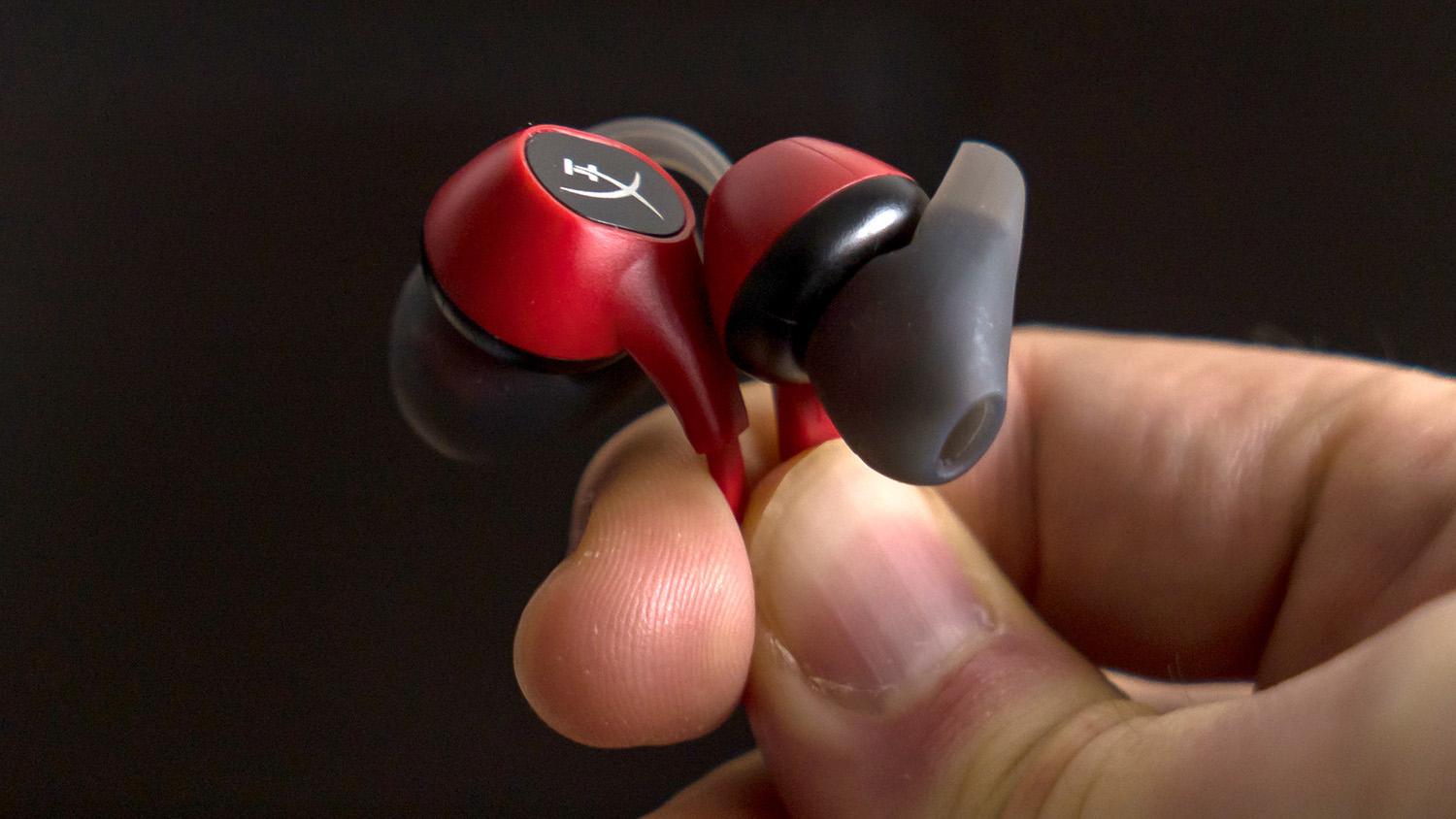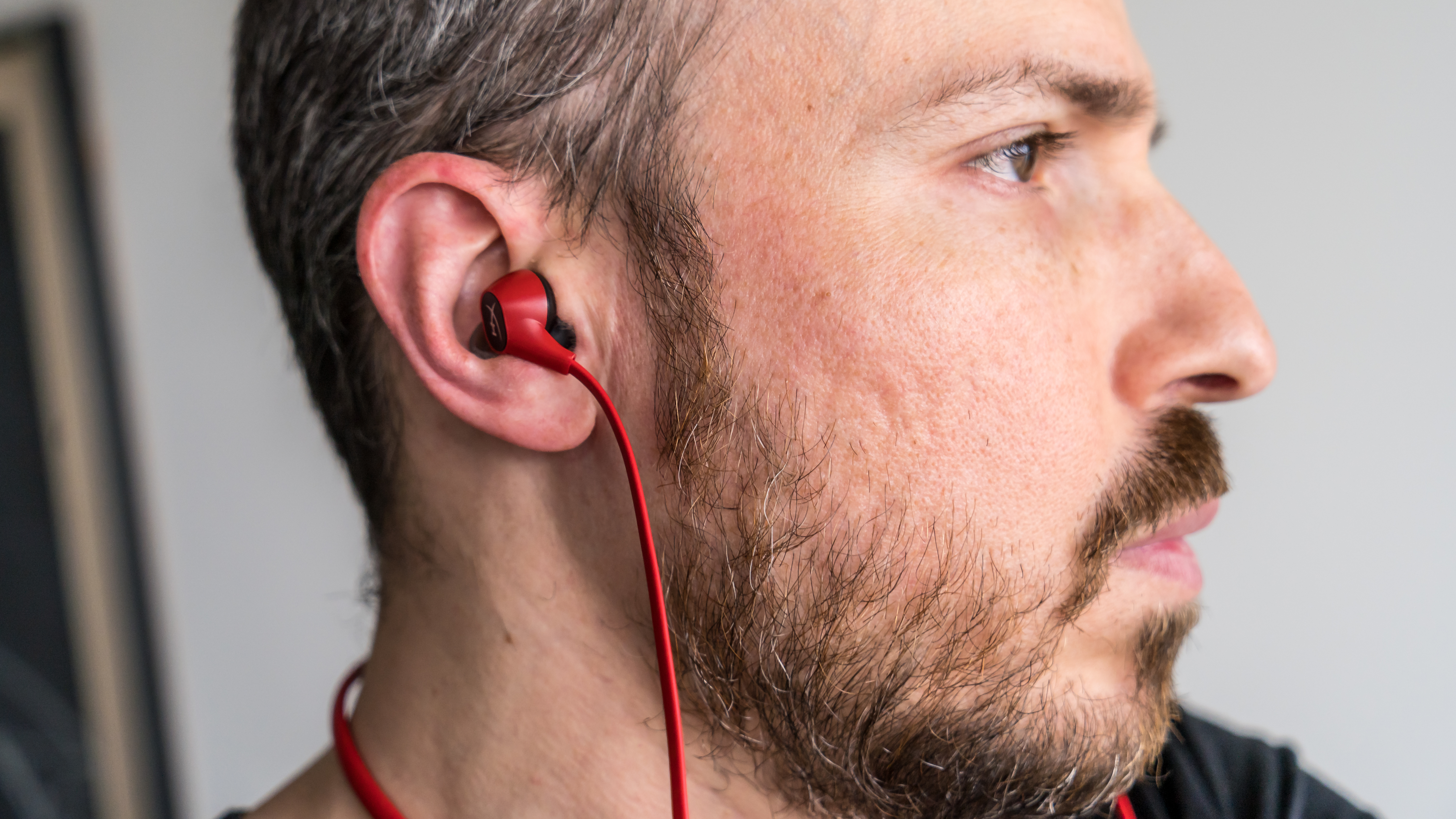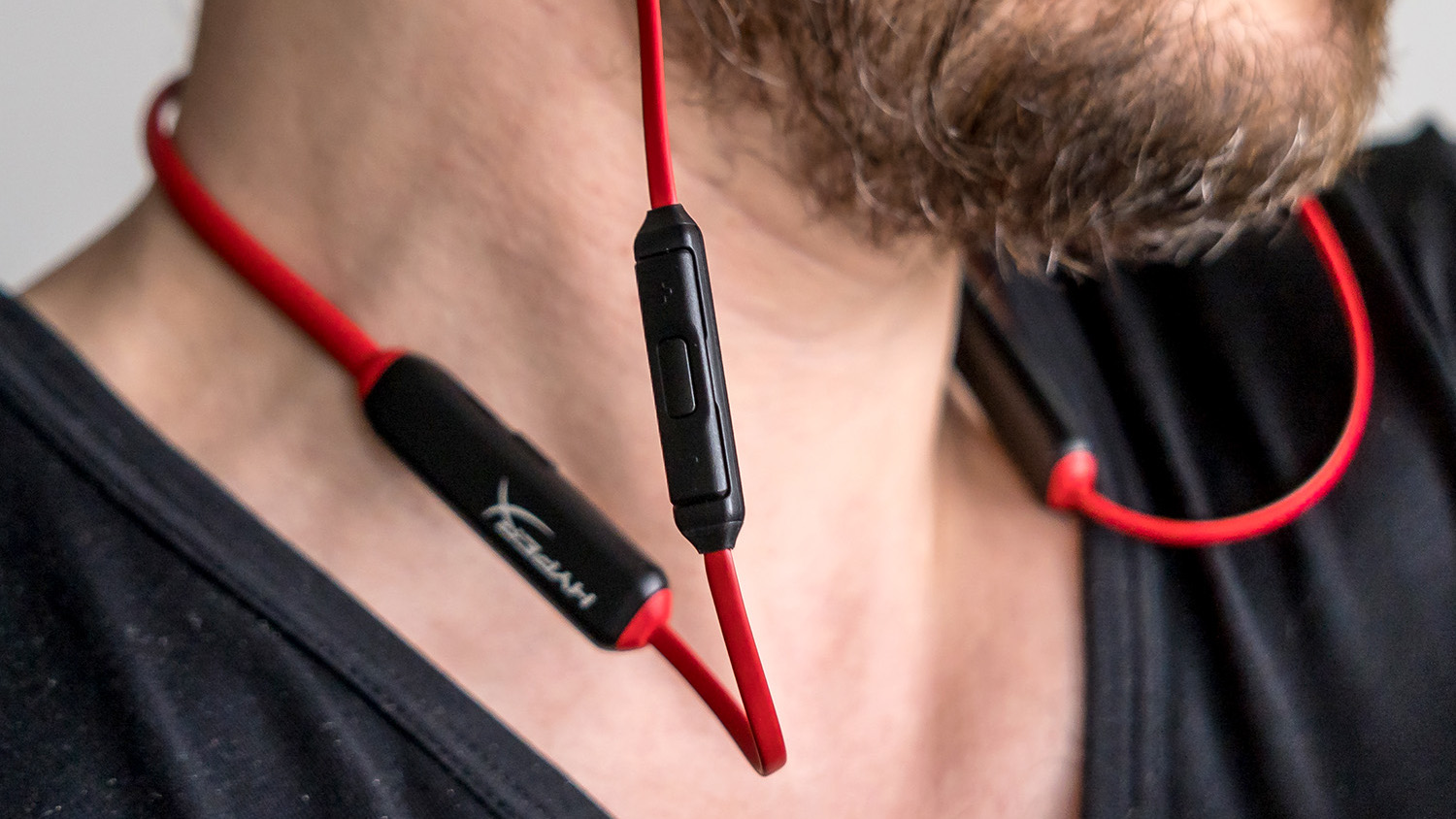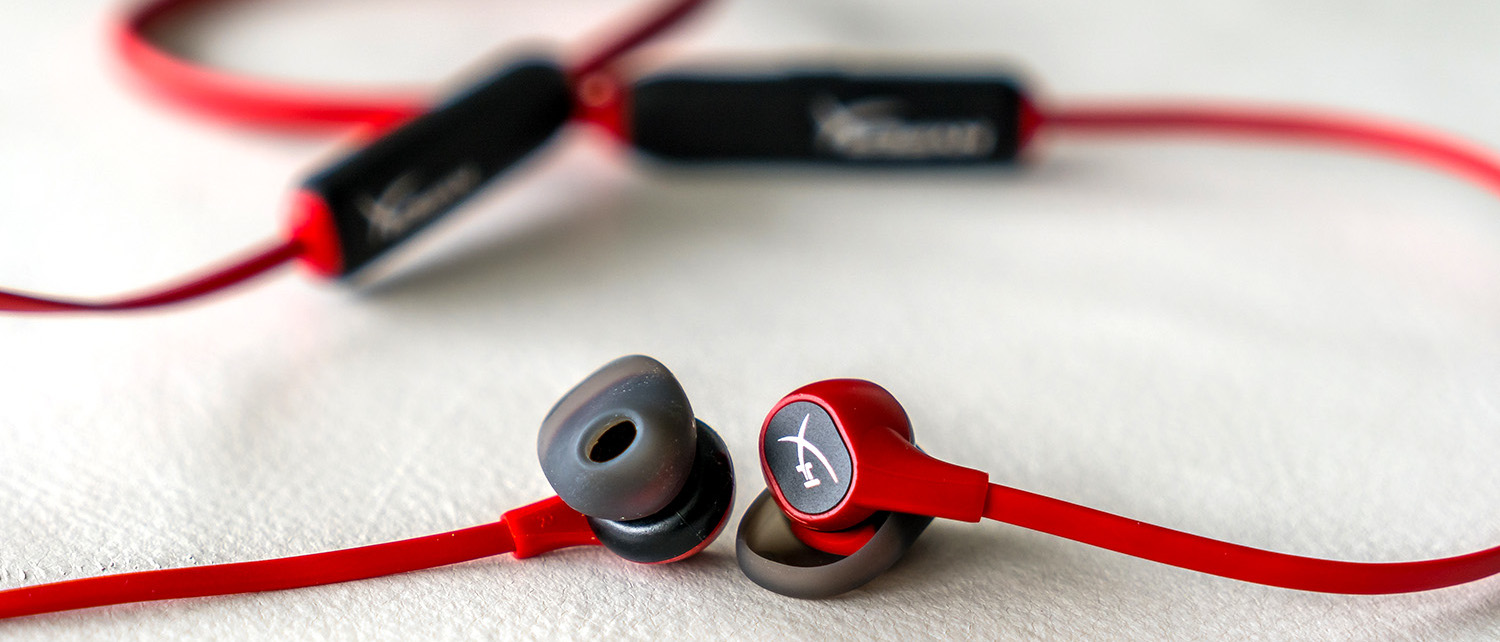TechRadar Verdict
Pros
- +
Sound quality and codec support
- +
Comfortable fit
- +
Solid battery life
Cons
- -
Angled ear tips might not be for everyone
- -
Iffy for sweaty workouts
- -
No AAC codec support
Why you can trust TechRadar
Wireless earbuds come in different forms, but the neckband variety aren’t quite as popular as others tend to be. That extra piece that rests around the neck still serves a functional purpose, and if you’re in that camp, there are cheaper options available.
The HyperX Cloud Buds Wireless don’t come with a heavy price tag, but are tastefully designed and built to work for longer stretches. It’s a brand better known for making gaming headphones and peripherals, yet these headphones aren’t really aiming for that audience. They’re for anyone and everyone, but should that include you as well?
Price and release date
The HyperX Cloud Buds Wireless are available now in the US and UK for $60/£55 (around AU$80).
Design
While they are neckband earbuds, the Cloud Buds Wireless don’t use a thick neckband that adds extra weight. The cable resting on the neck is indeed thicker and more rigid than the cable running to the earbuds themselves, but its considerable flexibility makes the whole package feel nimble.
The red also stands out in a crowd, and for whatever reason, we initially labeled these as workout earbuds because of it. But there is no definitive IP rating to indicate just how rugged they can be, so you’re taking a bit of risk going out for a run or workout with these on. We used them while bike-riding and had no problem, but in the event any sweat landed on them, we also wiped them clean to ensure no salty residue stuck around afterward.

On the inside, the 14mm drivers mean these earbuds bring some power to the table. HyperX even saw to it that they support both aptX and aptX HD Bluetooth codecs, helping bring out better sound from devices also supporting them. Unfortunately, there’s no AAC support, which happens to the codec of choice for Apple’s devices. That doesn’t mean you couldn’t use these earbuds with an iPhone or iPad, only that it would default to the standard SBC codec instead.
The inline remote on the right cable has a primary function button with volume controls. Double-press that function button to skip a track, and three times to repeat one. You also use it to answer or end phone calls. The remote also houses the microphone, which does a pretty good job picking your voice, but we’ll get to those nuances later. The on/off button is actually on one of the modules along the neckband, which we think is a good move because it ensures you don’t accidentally turn the earbuds off from the inline remote.
HyperX also includes a fabric case to carry the earbuds and charging cable with you for a little extra protection.

Features
Three pairs of silicone tips come in the box and they also have fins attached to them to help keep everything in place. Unlike other earbuds that position the driver to face directly into the ear canal, these are slightly angled to make them fit more snugly. It’s hardly a proprietary design, but it means that getting a tighter seal is harder to achieve. Rounded silicone tips, like you usually find in true wireless earbuds, are often better at that because they just slide into the ear head on. These are a little different in that regard.
It was easy to pair the Cloud Buds Wireless by just holding down the power button for five seconds, where a voice prompt chimes in. Next step was the Bluetooth menu on our phone and that was it. As there are no real major supporting features here, there is no app to download to get something extra out of them, like an equalizer or firmware updates, for instance. What you hear is what you get.
Audio performance
Off the bat, the Cloud Buds Wireless aren’t bass-heavy, pushing more of the mids and highs out for a skewed spectrum. This is all partly a consequence of the fit because without a tighter seal in your ear, the bass is the first to leak out. It would be easier to stop that from happening if the ear tips were the typical ones most earbuds now use, but these don’t leave as much wiggle room for positioning.
That doesn’t mean there’s no room at all, just that you will have to experiment with the different sizes here to see what works best. In our case, we did better with either the medium or large size tips. They fit snugly and securely, and just as importantly, retained some of the bass we wanted.
We just wish it was a little more. For tracks that rely on a heavier bass presence, these earbuds didn’t provide enough of a rumble. On rock and jazz tracks, however, the airy resonance actually worked in their favor, letting guitars, trumpets and saxophones come alive. Good examples of this were Danny’s Dream by Eddie Harper and Hearts on Fire by Bryan Adams, but we found steady results with those genres, generally.

Once we looked into tracks within those genres that relied on some bass, we noticed the limitations. Queen’s Another One Bites the Dust is all about that bass riff, and it felt flat on the Cloud Buds Wireless. Same with Sade’s Bullet Proof Soul, which also has a strong bass melody.
With hip hop, R&B and EDM tracks, we noticed the obvious lack of punch. We can’t be certain that every pair of ears will notice the same thing we did, as you might get a tighter seal than we did, but even so, the 14mm drivers here don’t push as much on the lows as they should.
One thing we tried was using third-party Comply Foam tips that could theoretically stay in place, but often found ourselves with the tip stuck in our ears. However, the experiment did prove that a tight seal brings back a lot of bass, so HyperX could have opted to go with a different design to accommodate that.
We didn’t have much of a problem with phone calls, and were even surprised that talking while bike-riding gave us few problems. But without any noise-cancelling going on, they are susceptible to background noises, so it does depend on how quiet your environment is. Using them for video calls was also easy, with no lag or latency.

Battery life
HyperX rates the Cloud Buds Wireless at up to 10 hours per charge at 50% volume. That number is pretty accurate, and only dips a little if you go a tad louder. What we really liked was the standby drain, or lack thereof. We’d listen for an hour, forget to turn them off, only to find that virtually no battery loss when going back to them hours later.
They proved to be workhorses that way, so we were never overly concerned with how long they lasted. While they do have a USB-C port to charge, we didn’t see a quick charge feature to get back up and running. It took about an hour or so to fully recharge, which isn’t bad, but if you’re looking for something fast before doing a run or workout, these won’t charge up so quickly.
Final verdict
For $60/£55, you should have reasonable expectations when it comes to any pair of wireless earbuds. That’s how we felt going into reviewing the Cloud Buds Wireless, and it’s why we see them as being worth the money under the right conditions.
If you like music that doesn’t rely as much on bass, want something that supports the aptX codecs, and don’t care to have things like noise-cancellation, you will be fine here. If not, well, it's not like you're hurting for other options...
- Don't believe us? Check out this guide to the best wireless earbuds
Ted Kritsonis is the Freelance Tech Journalist. He is a Tech journalist contributing to a dozen publications: Globe and Mail, MobileSyrup, Futurithmic, Android Central, TechRadar, and WhatsYourTech.ca, among others.

